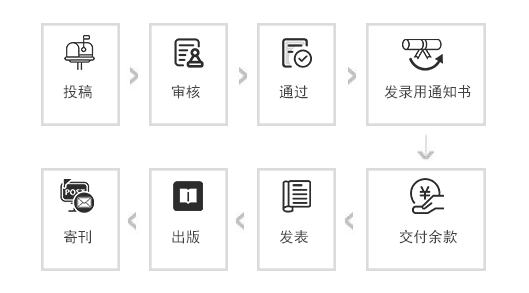Journal of Breath Research



- 中国知网数据库(CNKI)全文收录期刊
- 中国核心期刊(遴选)数据库收录期刊
- 中国万方数据库全文收录期刊
- 中国维普科技期刊数据库收录期刊
- 中国龙源数据库全文收录期刊
- 中国期刊网全文收录期刊



中国高校科技期刊研究会第9次会员代表大会在北京召开,中宣部出版局副局长张怀海、教育部科学技术与信息化司一级巡视员张国辉等领导出席会议并发表..
英文简介:Journal of Breath Research is dedicated to all aspects of scientific breath research. The traditional focus is on analysis of volatile compounds and aerosols in exhaled breath for the investigation of exogenous exposures, metabolism, toxicology, health status and the diagnosis of disease and breath odours. The journal also welcomes other breath-related topics.Typical areas of interest include:Big laboratory instrumentation: describing new state-of-the-art analytical instrumentation capable of performing high-resolution discovery and targeted breath research; exploiting complex technologies drawn from other areas of biochemistry and genetics for breath research.Engineering solutions: developing new breath sampling technologies for condensate and aerosols, for chemical and optical sensors, for extraction and sample preparation methods, for automation and standardization, and for multiplex analyses to preserve the breath matrix and facilitating analytical throughput. Measure exhaled constituents (e.g. CO2, acetone, isoprene) as markers of human presence or mitigate such contaminants in enclosed environments.Human and animal in vivo studies: decoding the 'breath exposome', implementing exposure and intervention studies, performing cross-sectional and case-control research, assaying immune and inflammatory response, and testing mammalian host response to infections and exogenous exposures to develop information directly applicable to systems biology. Studying inhalation toxicology; inhaled breath as a source of internal dose; resultant blood, breath and urinary biomarkers linked to inhalation pathway.Cellular and molecular level in vitro studies.Clinical, pharmacological and forensic applications.Mathematical, statistical and graphical data interpretation.中文简介:(来自Google、百度翻译)呼吸研究杂志致力于科学呼吸研究的各个方面。传统的重点是分析呼出气中的挥发性化合物和气溶胶,以调查外源性暴露,代谢,毒理学,健康状况以及疾病和呼吸气味的诊断。该杂志还欢迎其他与呼吸相关的主题。 典型的感兴趣领域包括: 大型实验室仪器: 描述能够执行高分辨率发现和针对性呼吸研究的最新分析仪器; 利用生物化学和遗传学其他领域的复杂技术进行呼吸研究。 工程解决方案: 开发冷凝液和气溶胶的新呼吸采样技术,化学和光学传感器,提取和样品制备方法,自动化和标准化,并进行多重分析,以保留呼吸矩阵并促进分析通量。测量呼出的成分 (例如CO2,丙酮,异戊二烯) 作为人类存在的标志或减轻封闭环境中的污染物。 人类和动物体内研究: 解码 “呼吸暴露”,实施暴露和干预研究,进行横断面和病例对照研究,分析免疫和炎症反应,并测试哺乳动物宿主对感染和外源暴露的反应,以开发直接适用于系统生物学的信息。研究吸入毒理学; 吸入呼吸作为内部剂量的来源; 与吸入途径相关的血液,呼吸和尿液生物标志物。 细胞和分子水平的体外研究。 临床,药理学和法医学应用。 数学,统计和图形数据解释。










英文简介:Journal of Breath Research is dedicated to all aspects of scientific breath research. The traditional focus is on analysis of volatile compounds and aerosols in exhaled breath for the investigation of exogenous exposures, metabolism, toxicology, health status and the diagnosis of disease and breath odours. The journal also welcomes other breath-related topics.Typical areas of interest include:Big laboratory instrumentation: describing new state-of-the-art analytical instrumentation capable of performing high-resolution discovery and targeted breath research; exploiting complex technologies drawn from other areas of biochemistry and genetics for breath research.Engineering solutions: developing new breath sampling technologies for condensate and aerosols, for chemical and optical sensors, for extraction and sample preparation methods, for automation and standardization, and for multiplex analyses to preserve the breath matrix and facilitating analytical throughput. Measure exhaled constituents (e.g. CO2, acetone, isoprene) as markers of human presence or mitigate such contaminants in enclosed environments.Human and animal in vivo studies: decoding the 'breath exposome', implementing exposure and intervention studies, performing cross-sectional and case-control research, assaying immune and inflammatory response, and testing mammalian host response to infections and exogenous exposures to develop information directly applicable to systems biology. Studying inhalation toxicology; inhaled breath as a source of internal dose; resultant blood, breath and urinary biomarkers linked to inhalation pathway.Cellular and molecular level in vitro studies.Clinical, pharmacological and forensic applications.Mathematical, statistical and graphical data interpretation.中文简介:(来自Google、百度翻译)呼吸研究杂志致力于科学呼吸研究的各个方面。传统的重点是分析呼出气中的挥发性化合物和气溶胶,以调查外源性暴露,代谢,毒理学,健康状况以及疾病和呼吸气味的诊断。该杂志还欢迎其他与呼吸相关的主题。 典型的感兴趣领域包括: 大型实验室仪器: 描述能够执行高分辨率发现和针对性呼吸研究的最新分析仪器; 利用生物化学和遗传学其他领域的复杂技术进行呼吸研究。 工程解决方案: 开发冷凝液和气溶胶的新呼吸采样技术,化学和光学传感器,提取和样品制备方法,自动化和标准化,并进行多重分析,以保留呼吸矩阵并促进分析通量。测量呼出的成分 (例如CO2,丙酮,异戊二烯) 作为人类存在的标志或减轻封闭环境中的污染物。 人类和动物体内研究: 解码 “呼吸暴露”,实施暴露和干预研究,进行横断面和病例对照研究,分析免疫和炎症反应,并测试哺乳动物宿主对感染和外源暴露的反应,以开发直接适用于系统生物学的信息。研究吸入毒理学; 吸入呼吸作为内部剂量的来源; 与吸入途径相关的血液,呼吸和尿液生物标志物。 细胞和分子水平的体外研究。 临床,药理学和法医学应用。 数学,统计和图形数据解释。
来稿要求:
论点新颖、论证严密、论据充足、文字精练。论文字数:5000字符-8000字符为宜,图表也要计算在内,不包括英文摘要关键词。
标 题:
文章标题要言简意赅,30字以内。作者署名:署真实姓名,注明作者单位、单位所在省市和邮政编码。摘 要:要用第三人称概括全文,300字以内。
关 键 词:
用3~8个关键词术语反映论文主题。专用符号:名词、术语、数字、计量单位、标点符号和数学符号等,必须符合国家标准;外文人名、地名和术语需译成中文。
图表格式:
文中插图与表格放在相应正文之后,分别按出现顺序用图1、图2或表1、表2统一编号。插图应为黑白色,其序号、标题及注释居中放在图的下方,表格的序号及标题置于表格上方,表注放在表格的下方(建议:由于篇幅限制,除核心期刊外尽量不用或少用图表)。
正文注释:
采用尾注形式,注释号①,②,③等标在相应正文右上角。
章节体例:
章节标题为:一级标题不编号,用黑体居中排,二级标题不编号,用楷体放在相应的文字段首与正文空一字格接排正文。 三级标题分别用1.2.3.顺序编号。文中接排标题用(1),(2)编号。
参考文献:
参考文献置于正文之后,近5年的不少于3条,用[1],[2]……顺序编号,如文章中有内容需要解释请用尾注形式。参考文献不全者不能进入审稿阶段。{参考文献格式如下:(1)图书:作者.书名(版本)[M].出版所在地: 出版社,出版年:(1)页码.
(2)期刊:作者.题目[J].期刊名,年,卷(期):页码.
(3)电子参考文献:作者.题目[OL].(文章的发表日期).[本文引用日期].作者简介:来稿者请附个人简介,内容包括姓名(出生年—),性别,籍贯,民族,学历,工作单位,职称,研究方向,通讯地址,联系电话及电子信箱。
一般情况下,您将在3个工作日内收到审稿结果。如文章有很强的时效性,请说明需要最晚刊发时间。
| 论文编号 | 作者姓名 | 论文题目 | 录用情况 |
|---|---|---|---|
| TG251-13579 | 韩丽炘 孟涛 温娟娟 刘晓琴 | 基于互联网的CBL+TBL教学法在病理学实验教学中的应用 | 已录用 |
| TG251-13681 | 邹隆强 杨清余 钟鸿路 李正南 陈 | 医学运动康复联合消肿止痛方治疗急性踝关节扭伤临床研究 | 已录用 |
| TG251-13794 | 林雨慧 陈霄雯 郑颖彦 朱永凯 贾 | 基于SWOT模型的儿童专科医院临床研究发展策略分析 | 已录用 |
| TG251-13762 | 郑鸿雁 | 重复经颅磁刺激治疗肝脾不调型功能性肛门直肠痛的临床研究 | 已录用 |
| TG251-13891 | 袁召1 赵会谢2 赵海深3 | 真武汤治疗阳虚水泛型慢性心力衰竭患者的临床研究 | 已录用 |
| TG251-13536 | 王杰1 张蕾蕾2 | 血脂和载脂蛋白水平与分化型甲状腺癌及其病理学特征的相关性探究 | 已录用 |
| GD24-5203 | 单一青 高鹏慧 姚瑶 | 思维导图护理对宫颈癌患者行腹腔镜术后康复的影响 | 已录用 |
| GD24-5217 | 林秀娟 梁静文 刘美仙 陈惠贤 | 加速康复外科管理模式在胸腔镜肺段切除术患者围手术期护理中的应用效果 | 已录用 |
| GD24-5213 | 杨素雯 何洁芳 陈妙霞 廖景升 | 健康行为改变整合理论对于宫颈癌晚期放疗患者依从性及自我效能的影响 | 已录用 |
| GD24-5199 | 杨月惠 王凤婷 | 个体护理计划在心脏瓣膜置换手术围手术期患者中的应用 | 已录用 |
邮箱:cnkibianjibu@163.com
QQ:
扫码联系: